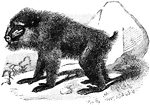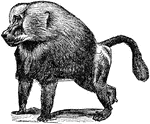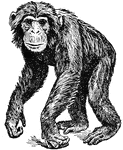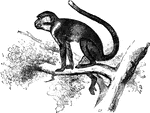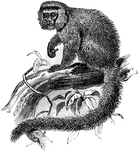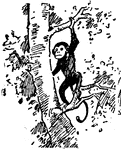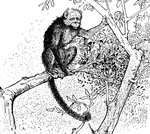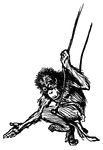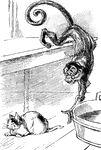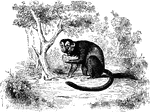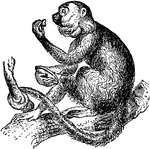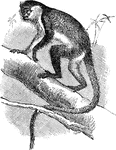Monkeys
The Monkeys ClipArt gallery includes 41 illustrations of baboons, langurs, marmosets, diana monkeys, howling monkeys, proboscis monkeys, rhesus monkeys, spider monkeys, capuchin monkeys, and other members of both old world and new world monkey groupings. Illustrations of apes are not included in this gallery.

Baboon
Monkey, a word loosely applied to apes, baboons, Old and New World monkeys, marmosets and lemurs.
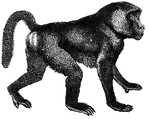
Baboon
Monkey, a word loosely applied to apes, baboons, Old and New World monkeys, marmosets and lemurs.
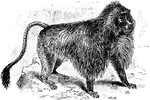
Gelada Baboon
The Gelada (Theropithecus gelada) is a baboon relative in the Cercopithecidae family of Old World monkeys.

Langur
A langur is a monkey of the genus Semnopithicus, which contains Asiatic forms characterized by slender…
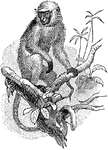
Gray Langur
The Northern Plains Gray Langur (Semnopithecus entellus) is a primate in the Cercopithecidae family…
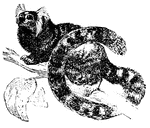
Marmoset
The marmosets are distinguished from other monkeys by their sharp and crooked claws. They are skillful…
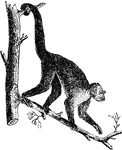
Monkey
A name commonly applied to the whole order of quadrumanous mammals, but the term is limited in its application…
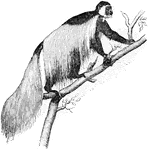
Colobus Monkey
Monkey, a word loosely applied to apes, baboons, Old and New World monkeys, marmosets and lemurs.

Diadem Monkey
C. diadematus. This monkey is nearly black, the lower prts being green. It is marked with a…

Diana Monkey
A large African monkey. So called from a fancied resemblance of its white coronet to the silver bow…
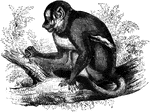
Douroucouli Monkey
"N. trivirgatus. Its generl color is gray: its body and head measure ten inches. It lives on…
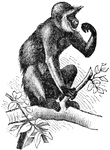
Hanaman Monkey
Monkey, a word loosely applied to apes, baboons, Old and New World monkeys, marmosets and lemurs.
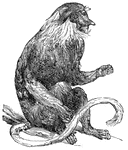
Proboscis Monkey
A native of Borneo. The proboscis monkey is so called because of its large nose. Males generally have…
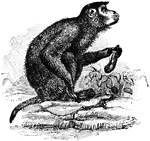
Rhesus Monkey
One of the sacred monkeys of India. It is 18 inches long, the tail 6 or 8 inches, and mostly of a yellowish…
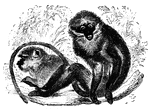
Sooty Monkey
"C. fuliginosus, has the upper parts of the body generally of a smoky gray; the lower parts…
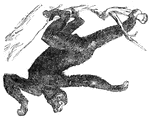
Spider Monkey
The spider monkey uses its tail in climbing. It uses its tail also to feel with, and to seize small…

Spider Monkey
Monkey, a word loosely applied to apes, baboons, Old and New World monkeys, marmosets and lemurs.
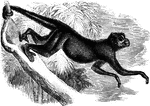
Spider Monkey
"The Greek word ateles signifies imperfect, and is applied to this genus in allusion to the absence…
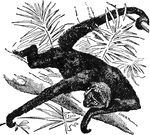
Spider Monkey
"Spider Monkey is a general name applied to many species of platyrhine or New World monkeys, distinguished…
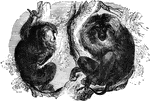
Wanderoo Monkey
"M. Silenus, has its hair deep black throughout, with the exception of the long beard mane,…
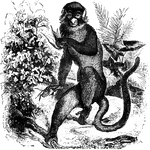
White-Nosed Monkey
C. nictitans. The nose of this monkey is not only white, but more prominent than in most monkeys.…
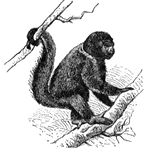
Wooly Monkey
Monkey, a word loosely applied to apes, baboons, Old and New World monkeys, marmosets and lemurs.

Capuchin Monkey
Monkey, a word loosely applied to apes, baboons, Old and New World monkeys, marmosets and lemurs.

Southern Muriqui
The Southern Muriqui (Brachyteles arachnoides) is a wooly spider monkey in the Atelidae family of New…
Spermatozoa of an Ape
"One of the numberless microscopic bodies contained in semen, to which the seminal fluid owes its vitality,…
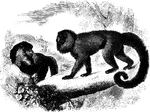
Collared Tee-Tee
"Genus Callithrix. The monkeys of this genus are called Sajous by some author. They…
